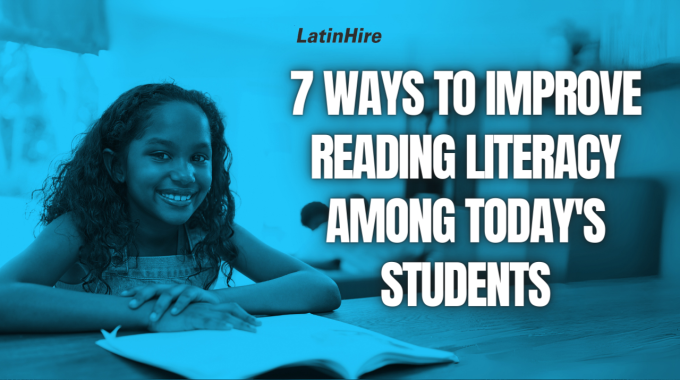Every student has experienced the dynamic environment of a market, where goods and services are…

7 Ways to Improve Reading Literacy Among Today’s Students
It goes without saying that literacy is one of the most important skills to possess in this day and age. Reading literacy isn’t just about decoding words, it is the foundation of a child’s future opportunities and social advancements.
As you’re reading this article, it’s easy to overlook the privilege of literacy that allows us to understand and engage with written text. Yet, around the globe, countless adults lack this fundamental skill, unable to read beyond basic levels.
Statistics reveal that in the US alone, 54% of adults struggle to read above a sixth-grade level. Even more concerning is the fact that a significant portion of individuals within the criminal justice system and recipients of welfare support struggle to read, further exasperating social disparities.
The consequences of low literacy levels are very serious, underscoring the urgency to elevate national literacy rates among our students. Achieving this goal requires a multifaceted approach that addresses various aspects of education, access to resources, and community engagement.
In this article, we’ll explore seven strategies to promote reading literacy among today’s students:
1) Early Childhood Education: Investing in early childhood education programs can lay a strong foundation for literacy skills. Preschool programs that focus on language development, storytelling, and basic reading skills can be highly effective.
Young children tend to be most receptive to learning when immersed in environments that stimulate their curiosity and foster interactive engagement. Incorporating activities in early childhood education that promote phonemic awareness, such as rhyming games and letter recognition exercises, can cultivate essential pre-reading skills.
2) Family and Community Involvement: Engaging families and communities in promoting literacy is essential. This could involve providing resources and support for parents to help their children with reading at home, establishing community libraries or reading centers, and organizing literacy events and workshops.
By equipping parents with strategies to support their children’s reading development at home, we extend the learning continuum beyond school hours. Through collaborative efforts that bridge the gap between home, school, and community, we can cultivate a culture where literacy thrives and flourishes.

3) Access to Books and Resources: Ensuring that every student has access to books and other reading materials is critical. This may involve setting up libraries in under-served areas, providing free or low-cost books, and utilizing digital resources such as e-books and online libraries.
The more resources that are available, the more opportunities students have to engage with literacy. However, there also needs to be effective promotion of these resources to ensure that they get taken advantage of. This can include community outreach programs, targeted advertising campaigns, and collaboration with local schools to raise awareness of these resources.
4) Literacy Support Programs: Implementing targeted literacy support programs for struggling readers can make a significant difference. This could include interventions such as one-on-one tutoring, after-school literacy clubs, or summer reading programs.
Offering these programs can help level the playing field as the students who fall behind on their reading skills can have extra support to get them back on track. In order for these support programs to work, teachers and parents must actively track student reading levels and intervene when necessary.

5) Technology Integration: Leveraging technology can enhance literacy instruction and access to resources. This could include using educational apps and games that promote reading skills, providing access to digital libraries, and using online platforms for distance learning and literacy support.
With the advancement of technology, there are limitless resources on the internet to help students enhance their literacy. Take some time to research the options available and choose the ones that you believe will be most beneficial for your students.
6) Professional Development: Invest in ongoing professional development opportunities for educators to stay on top of the best practices in literacy education. Encourage collaboration among teachers to share effective strategies and refine instructional approaches.
It’d be a good idea to dedicate a portion of each staff meeting to discussing the literacy rates of students in the school so everyone on staff is on the same page and can collectively take action to help students reach the correct reading level.

7) Promote a Culture of Reading: Fostering a culture of reading both inside and outside of schools is important. This could involve organizing reading challenges, book clubs, author visits, and other events that celebrate reading and encourage a love of books.
Students will do more of what they believe is fun. If reading is seen as a form of entertainment rather than a chore, students will naturally be drawn to books and enhance their own reading skills. Dedicate a moment during each school day for students to read books and organize book swaps or book fairs for them to get exposed to different types of books.
By implementing these strategies in a coordinated manner between school and home life, we can work towards improving literacy levels and ensuring that every student has the opportunity to develop strong reading skills for a brighter future.
What other strategies do you use to enhance reading literacy among your students? Share them in the comments below!



